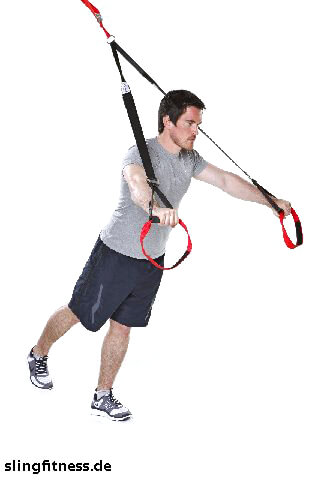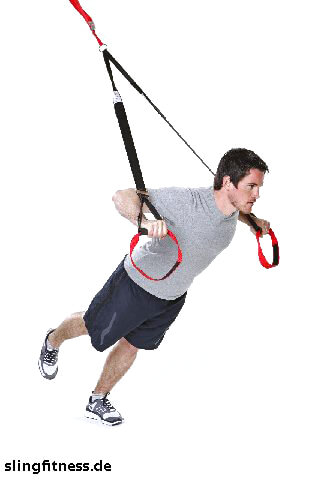Primary: Chest, Shoulder, Arms, Abdominals (pectoralis, deltoideus, trizeps brachii, abdomini)
Secondary: Legs, Calf (quadrizeps, gastrocnemius)
This type of the classic chest press arranges for an additional requirement of the coordination and sense of balance. It requires a high full body tension and a precise use of strength. Furthermore, abdomen- and leg-muscles get stressed as well.
The following figures illustrate the exercise Chest Press One-Legged:
 |
 |
| Suspension Training Exercises For The Chest | |
|
Starting Position One leg acts as supporting leg; the other one is lifted backwards. Your arms are stretched forward and placed under the height of the shoulder, your palms point downwards. The weight is on the ball of the feet. |
Final Position The elbows are bent about 90 degrees just behind the shoulder and the hands are 25-40 cm at your sides. The body is stretched under tension. The body weight on the leg, the foot is placed correctly. |
|
Movement 1 Now bend your arms in the elbow and direct the hands beside the body. Your torso tilts down forwards, your supporting leg remains stretched during the whole execution. |
Movement 2 Stretch your arms in your joints of the elbows to set your body up again. |
|
Hint: Bend your arms slowly and make sure that the shoulder stability will be preserved! Holding the body tension upright throughout the exercise and be focused on a sufficient tension in your core! Attempts to maintain a balance by constantly balancing movement with the foot muscles. By lifting the arms you reduce the friction caused by the belts while generating a greater instability. |
|
